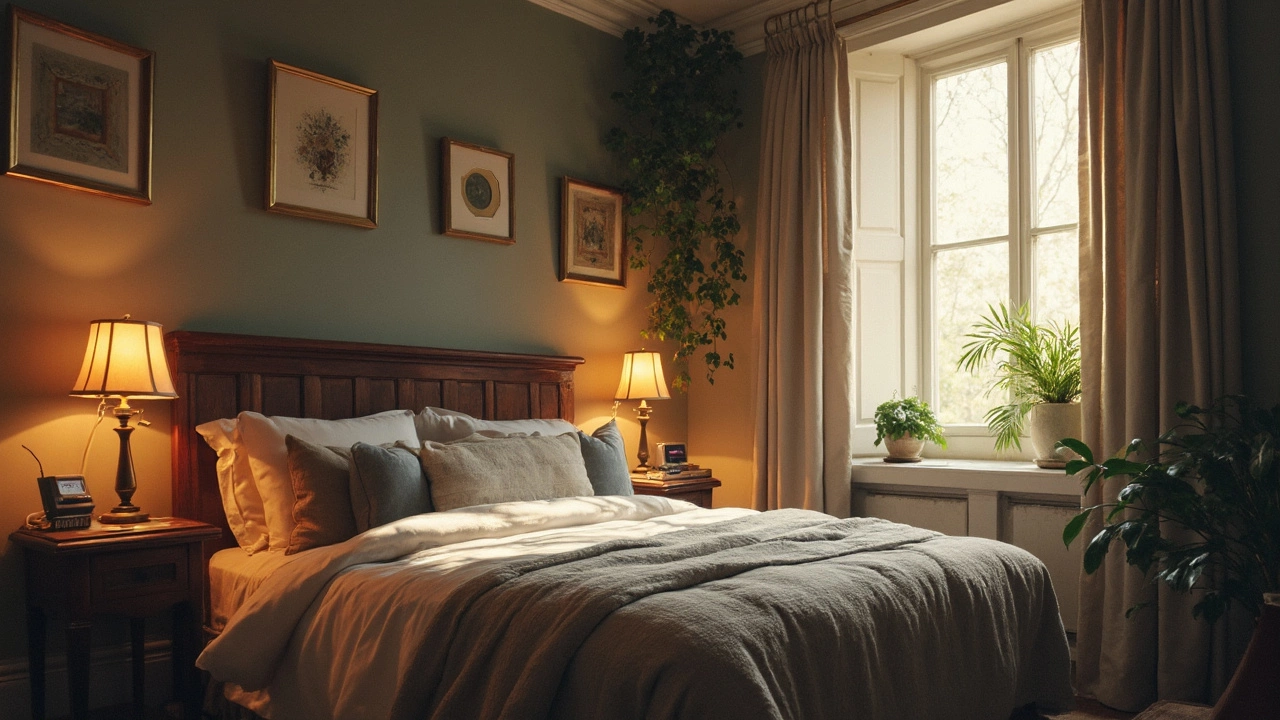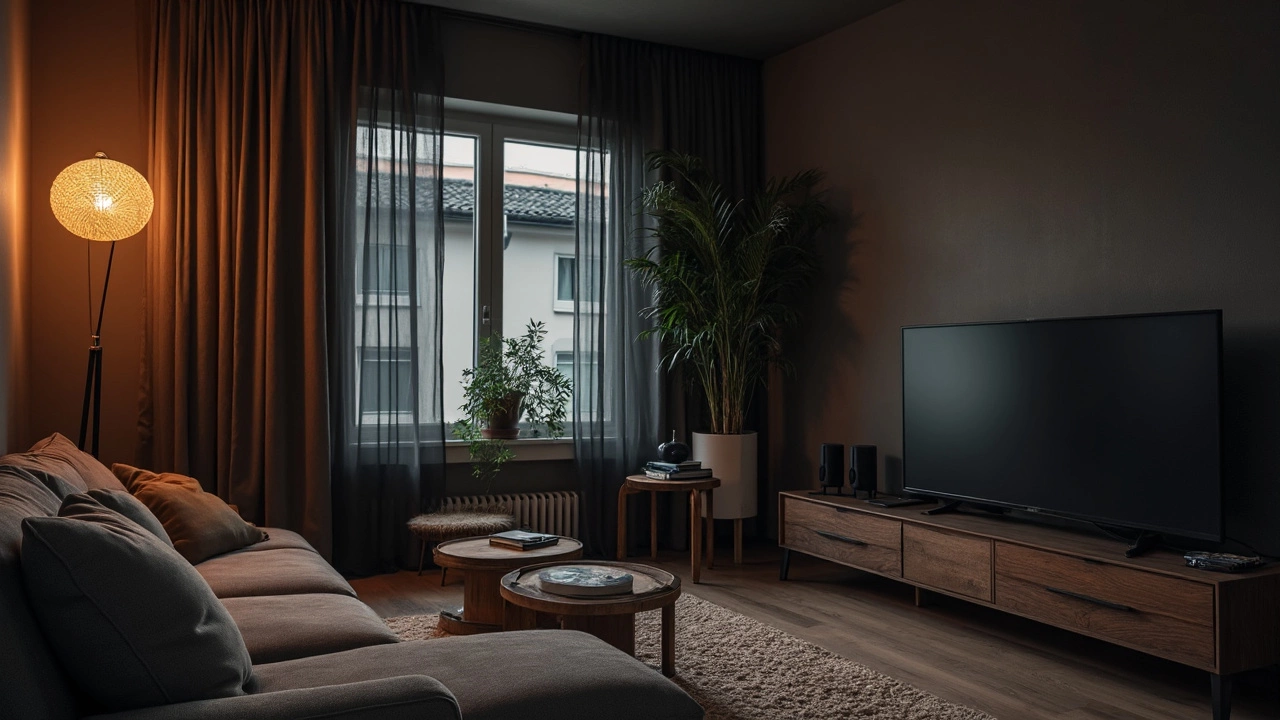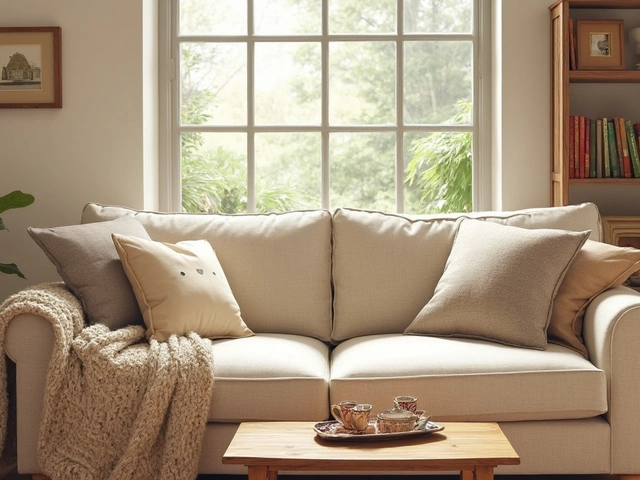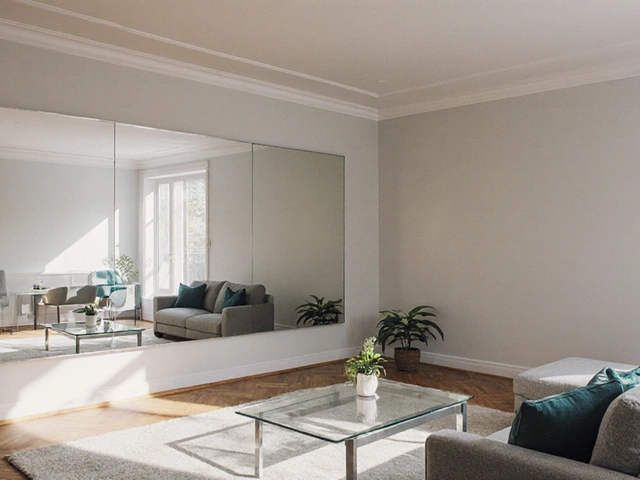Blackout curtains can transform any room into a haven of darkness, but before you rush to cover your windows, let's talk about the potential downsides. You might love a pitch-black environment for sleep, but your body's natural rhythm could have mixed feelings. Sunlight isn’t just about light, it helps regulate our sleep patterns and mood. Too much reliance on blackout curtains might mess with your sleep-wake cycle, especially if you start sleeping in a lot longer than needed.
Plus, there's the energy factor. While they can insulate rooms by keeping heat out in the summer and cold in during winter, blackout curtains might not be the ace you think they are when it comes to efficiency. If they're not perfectly fitted or if you leave them closed all day, you could end up using more artificial light, bumping up your energy bill. It's not a dealbreaker, but definitely worth considering.
- Impact on Health and Well-being
- Energy Efficiency Concerns
- Maintenance and Durability Issues
- Effects on Indoor Plants
Impact on Health and Well-being
Trust me, I've been there—falling in love with the idea of blackout curtains to make my bedroom feel like a cozy cave. But as snug as they might make you feel, these curtains can impact your health in a sneaky way. You see, our body clocks, or what's known as circadian rhythms, rely on the natural light-dark cycle to keep us in sync with day and night.
When you cut off natural light completely, your sleep-wake cycle might get confused. A study from 2022 found that constant dark conditions could potentially delay sleep patterns, leading to issues like insomnia or lower mood levels. So, if you're a night owl or already struggling with sleep, blackout curtains could end up making mornings tougher than they need to be.
Vitamin D and Mood: The Sunshine Factor
Here’s a bright idea—natural sunlight helps your body make vitamin D, which helps with mood regulation and bone health. Sticking with blackout curtains during the day could lower your levels, especially if you’re not stepping out much. You might find yourself feeling a little down or more lethargic than usual—it’s not just about sleep!
Creating a Balance
If you're set on keeping blackout curtains, perhaps consider throwing them open during daytime hours to let some light in. Or, have a timed routine where these curtains automatically glide open when it's time to wake up. There are even apps and devices designed to simulate sunrise through your curtains to keep your body clock ticking smoothly.
- Use blackout curtains at night only—let in natural light during the day.
- Pair with smart home systems to automate curtain opening as part of your morning routine.
- Consider supplemental lighting that mimics natural daylight if you’re homebound.
Balancing the benefits of deep sleep with exposure to daylight can help you lead a healthier, more well-balanced lifestyle. And who doesn't want their morning coffee accompanied by a splash of sunshine?
Energy Efficiency Concerns
When it comes to reducing energy use, blackout curtains might not be the saving grace you'd expect. Sure, they block out sunlight completely, which sounds like a good plan in summer. But, if they don't fit snugly, you might lose some of that benefit. Air can sneak through gaps, resulting in less effective temperature control.
If you're thinking about using them to cut heating costs in winter, remember that while they block drafts, solar heat that usually warms up a room during the day is also kept out. If your timing's off and you keep them closed during sunny but cold days, you could be saying goodbye to potential free heating.
Lighting Dilemmas
An overlooked but real concern is the increased use of artificial lighting. By reducing or completely blocking natural light, you'll be more reliant on lamps or overhead lighting during the day. This might not seem like much, but it can add up, especially during winter when days are shorter. Keeping a balance between sunlight and darkness is key.
Fitting Considerations
It's essential to think about how you install these curtains. Poor fitting could lead to unintended energy loss, turning your electric bill into a monthly surprise. Ensuring your curtains overlap the window frame edges and hang close to the window itself can mitigate these downsides. Some folks even opt for lining curtains or using other insulating window treatments along with their blackout curtains to get the best of both worlds.
While blackout curtains have their perks, they might not be the ultimate solution for all your energy woes. Consider combining them with other methods, like double-glazed windows or even a simple draft stopper, to maximize comfort efficiently.

Maintenance and Durability Issues
Blackout curtains can look great and do their job well, but they aren't always maintenance-free. One big thing you need to know is that these curtains tend to be heavier than your typical ones. Their weight comes from the multiple layers designed to keep light out, which can put a strain on curtain rods and hooks over time. So, you might need to upgrade your hardware to something more robust if droopy curtains aren't your style.
Another point to consider is cleaning. With blackout curtains, regular dusting might not cut it. These layered fabrics often require special care like hand washing or dry cleaning to avoid damage. Throwing them into the machine could ruin the fabric or damage the blackout lining. It's a bit of a hassle, especially if you're the kind that likes things fuss-free.
Material Wear and Tear
Over time, the heavy fabric can start to show signs of wear and tear faster than lighter curtains. This is especially true if you open and close them frequently. The areas around the hooks might start to fray, or the lining could peel off. To avoid a shabby look, keep an eye on these spots and, if needed, reinforce them with some sewing.
Cost-Benefit Analysis
Let's not forget about the cost. Quality blackout curtains can be pricey, and if they end up needing frequent replacement or repairs, that cost can add up. It might be smart to consider whether the benefits of those curtains truly match your budget and lifestyle.
Wouldn't it be smart to keep these points in mind and maybe do a little math before committing? It might save you some cash and hassle down the line.
Effects on Indoor Plants
If you're a plant parent, this one's for you. Blackout curtains can really throw a wrench in your greenery plans. Plants need sunlight like we need our morning coffee; it's essential for photosynthesis, which is how they make their food. Without it, they can get a bit droopy, and nobody wants that.
Why Sunlight Matters
Plants use the energy from light to convert carbon dioxide and water into glucose and oxygen—a process called photosynthesis. The lack of light caused by blackout curtains can disrupt this process, leading to stunted growth or even plant death over time if they're not getting their daily dose of rays.
Tips for Balancing Light Needs
- Rotate placement: Shuffle your plants around to different spots in your house during the day to ensure they catch some sun.
- Use timers: Set specific times when your blackout curtains are opened to maintain a regular light schedule.
- Choose the right plants: Opt for low-light tolerant plants like snake plants or pothos if you really love keeping your curtains shut.
While blackout curtains might help with better sleep or reduced screen glare, they could spell doom for your plant's well-being if you’re not careful. Finding that sweet spot between blocking out light and letting your plants thrive is key.







